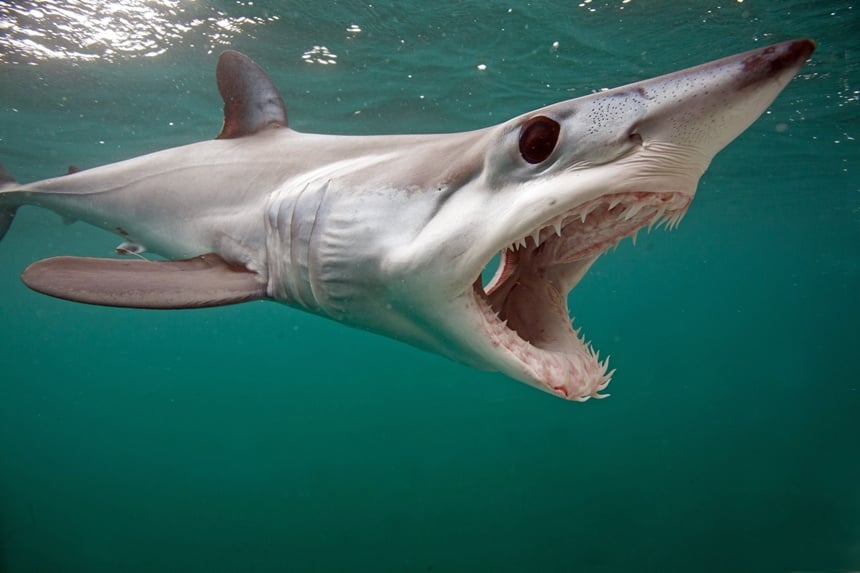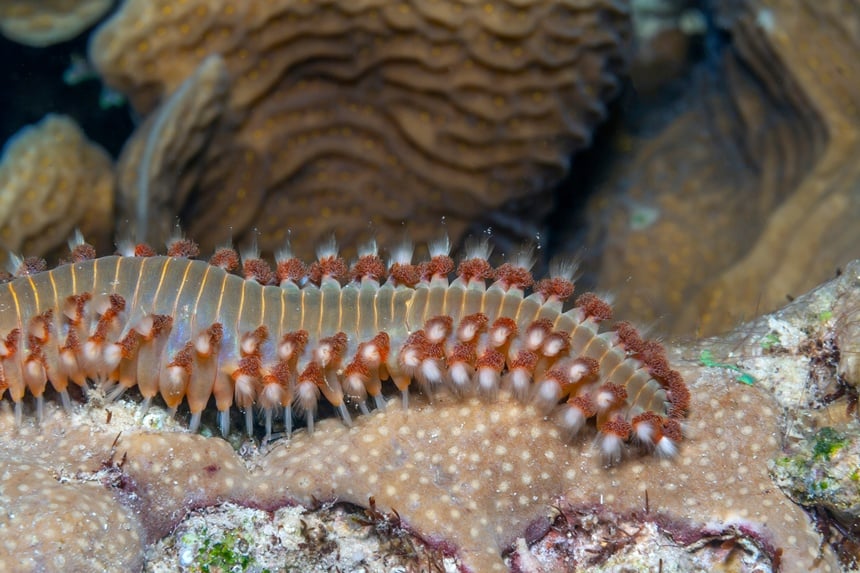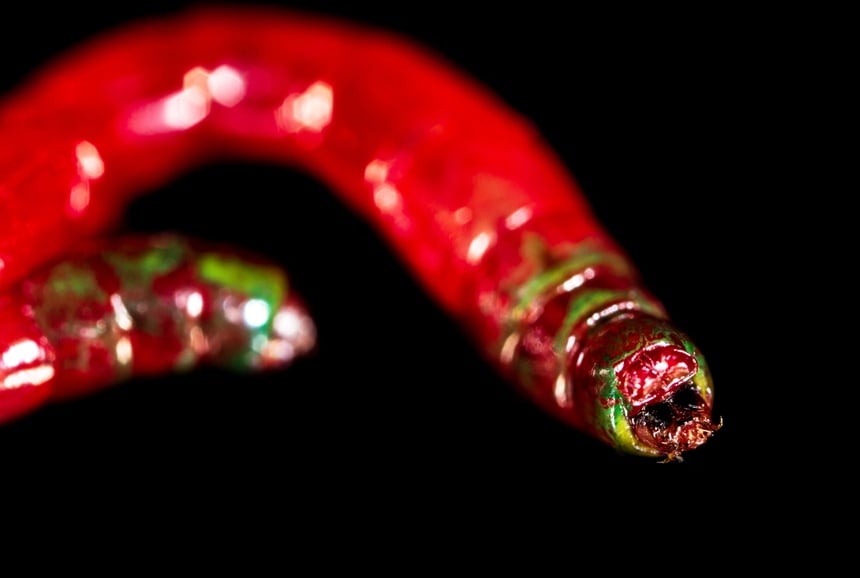Weekly Newsletter
The best of The Saturday Evening Post in your inbox!
According to a recent survey, about 27 percent of American adults have no dental insurance. Many of those with a dental plan have minimal coverage, and sometimes a limited choice of dentists. I once had a plan that only covered “participating providers,” and the nearest one was on an island out in Lake Superior. Not really, but it was a long drive. Taking care of our teeth can be challenging.
And yet, the natural world is rife with examples of tough, durable choppers, some of which are essentially decay-proof. Maybe it’s time we looked at some of these cases for ideas on how to improve human teeth.
One option is to get self-replacing teeth like sharks have. This is not fiction – there is solid research underway on how we could imitate the way that sharks generate new teeth as a means for us to re-grow any tooth that we lose from breakage or decay. It turns out that shark teeth grow as needed from stem cells. Right now, human stem cells are only used in bone-marrow transplants for cancer patients, but other uses, like multiple sclerosis treatments, are being studied.
 A mako shark with multiple rows of teeth (Shutterstock)
A mako shark with multiple rows of teeth (Shutterstock)A shark has multiple rows of teeth in its mouth at all times, a feature we might not want to acquire. We’re more interested in the part where a shiny new tooth automatically moves forward, in what’s described as a “natural conveyor belt” system, to take the place of a lost tooth. In addition, sharks never run out of teeth, another aspect that intrigues us.
Growing actual shark teeth is another matter, and might require gene editing, a dicey proposition. All the same, I imagine they’d be handy for getting good seats at a sports venue — just flash a grin and watch a whole section clear out. Dating might suffer, since you couldn’t smile on profile pictures, and it would be awkward if you’re out to dinner and an old tooth stays behind in your pizza slice after a bite.
Metal is another option in the animal world. Metal-mouthed critters first came to my attention in leafcutter ants, found in the southwestern U.S. as well as in Central and South America. These guys pass their time using razor-sharp mandibles to snip leaves into lace doilies and other inspired shapes. The ants then hike their scissor-art leaves to underground nests and inoculate them with a fungus that the whole colony feeds on.
 Leafcutter ants (Shutterstock)
Leafcutter ants (Shutterstock)Researchers long knew that leafcutter ants could shred foliage, as well as human flesh, with ease, and that ant jaws stayed sharp throughout their lives. But how they kept their chops tip-top was a mystery, as the working edge of an ant’s jaw is too fine to see, even with an electron microscope.
In 2021, a biophysicist at the University of Oregon employed cutting-edge technology to crack the case. Using atom-probe tomography, he showed that ant teeth are made of protein fused to individual zinc atoms to form a nanoscale blade. Mechanical loads are evenly and perfectly distributed along the jaw.
Bristle worms, found in nearly all coastal waters of the U.S., including Alaska, have a different take on dentistry. There are about 10,000 species of these annelids, which originated some 500 million years ago, and are mostly in the four-inch size range. Like all segmented worms, their primary feature is “creepiness.” A few years ago, scientists at the Vienna University of Technology discovered that bristle worm jaws are typically infused with iron, though sometimes with magnesium or zinc. And their jaws are unbreakable.
 A bristle worm (Shutterstock)
A bristle worm (Shutterstock)However, the fact that bristle worm jaws contain metal does not explain their freakish strength. It turns out that baby bristle worms “build” their chops by slowly exuding a protein-metal flux, like nature’s version of a 3-D printer. The protein-metal goo hardens into a bullet-proof (I’m guessing) amalgam that bends under pressure, but flexes back to its original shape. The researchers expect that studying bristle worm teeth will lead to high-strength materials that can be made more efficiently and cheaply than what is currently available. They didn’t say anything about us getting unbreakable teeth.
Another oral overachiever is the bloodworm, also native to U.S. coastal waters outside of northern Alaska. These residents of intertidal zones can be as long as 14 inches, and are both blood-colored and bloodthirsty, using their fangs of copper to impale prey. They’re known to be easily provoked and aggressive. Worse yet, a bloodworm keeps its head tucked inside its body until it’s ready to pounce, whereupon its jaws shoot out like the creature from the iconic space-horror film Alien to bite its victim. Oh, and it’s venomous as well. Its gross-factor may be off the charts, but it gets high marks for mechanical engineering.
 A bloodworm (Shutterstock)
A bloodworm (Shutterstock)In 2022, biochemists at University of California-Santa Barbara revealed how bloodworms get tough copper teeth. In their juvenile phase, they make a slurry of proteins and melanin, which we know as a human skin pigment. They infuse the melanin with copper scavenged from marine sediments, resulting in a scimitar-shaped tusk that would’ve made any Bronze Age metalworker jealous. This is the first case where melanin has been documented as a structural material, and it may lead to better consumer products.
Personally, I’d consider gene edits to get bloodworm teeth, as long as it doesn’t make my head retract when I’m not eating. One note about gene editing – the changes are heritable. If you sign up for shark teeth, your kids will get them too. But maybe that’s better than having to worry about dental coverage.
Become a Saturday Evening Post member and enjoy unlimited access. Subscribe now
.png)


![Braid groups are cool [pdf]](https://news.najib.digital/site/assets/img/broken.gif)
